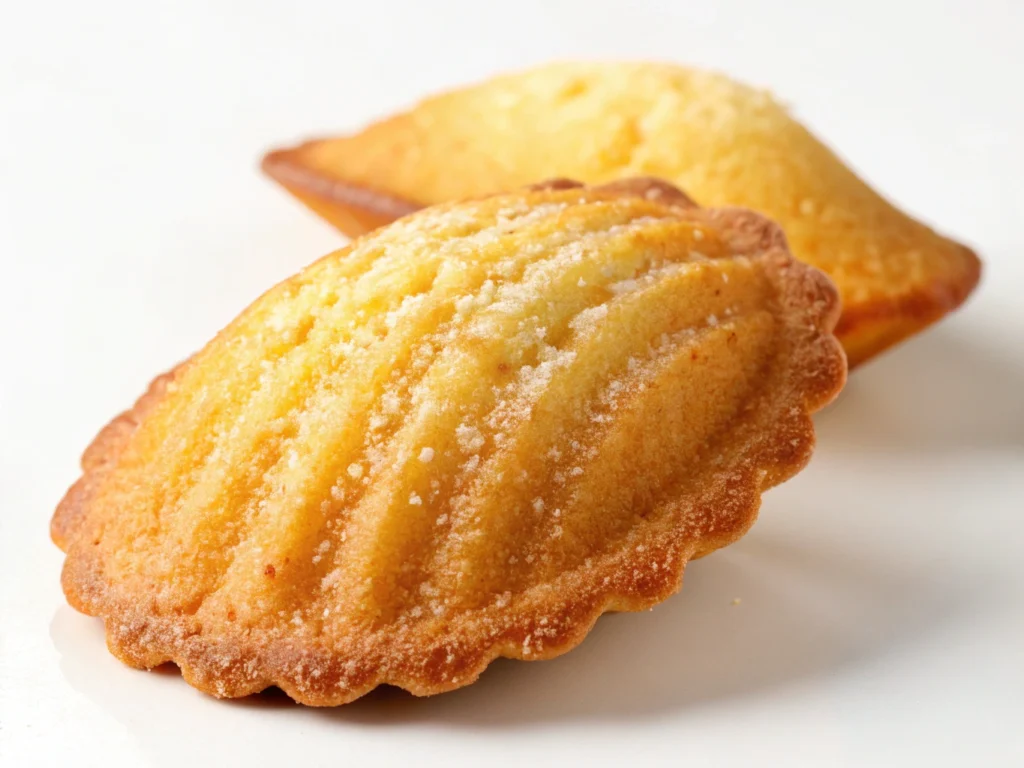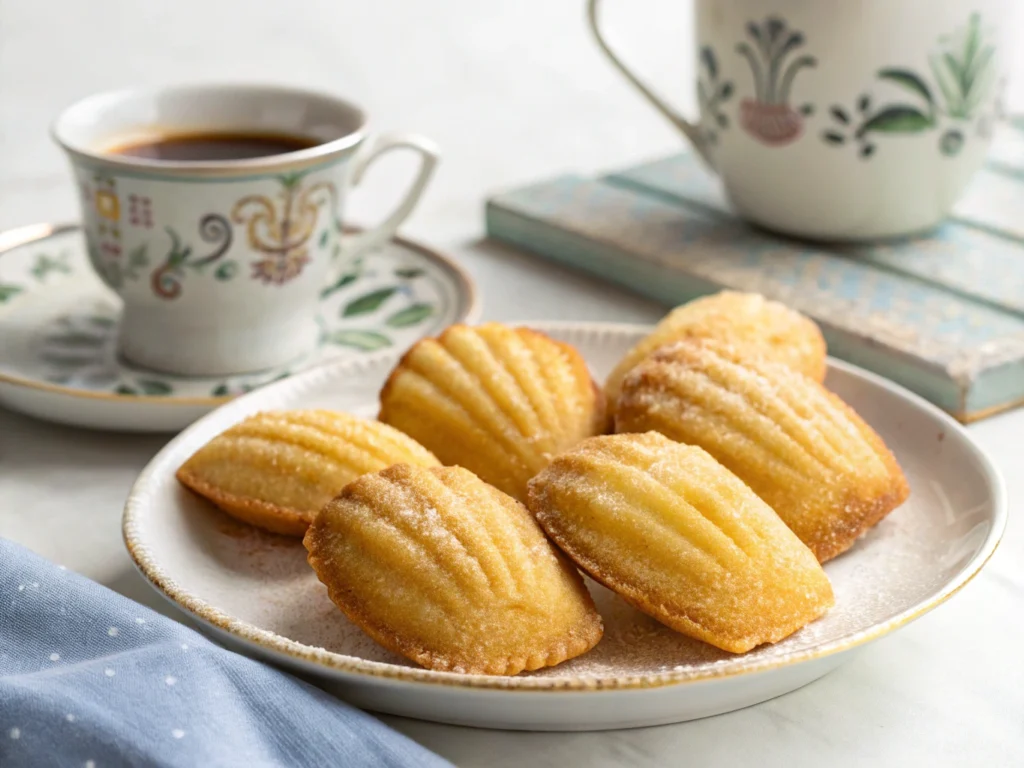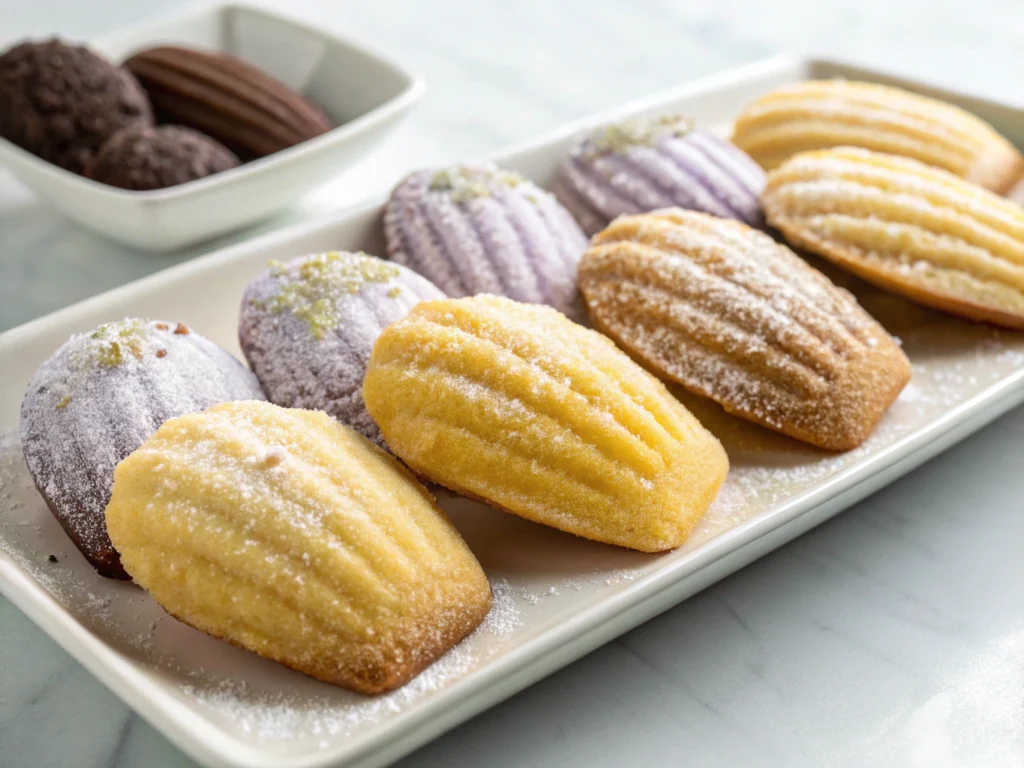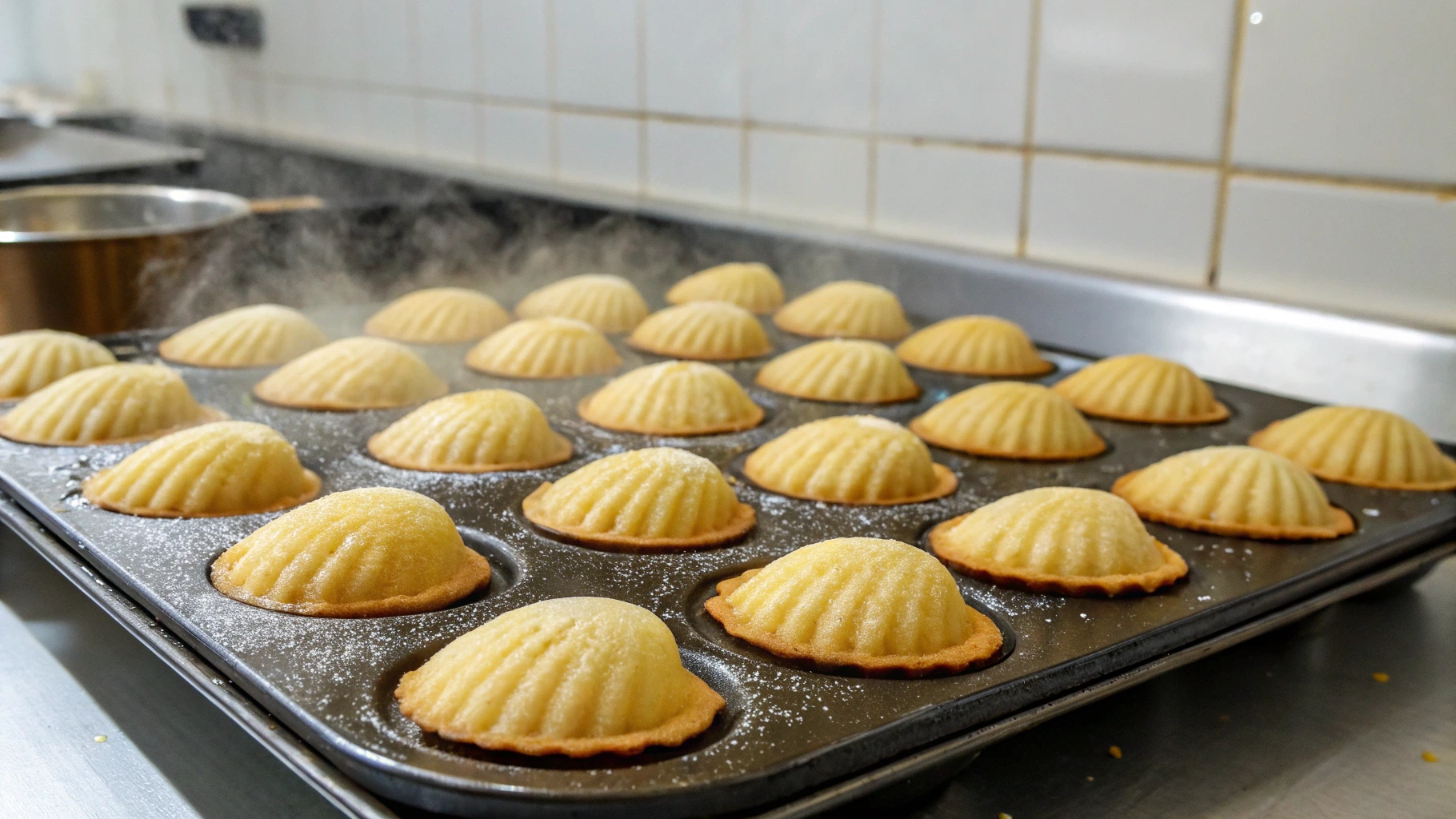Madeleine cookies are more than just a delightful French treat—they’re an experience. Their soft, sponge-like texture, aromatic flavors, and iconic shell shape make them stand out in the world of baked goods. Whether enjoyed alongside a hot cup of tea or as a dessert centerpiece, Madeleines leave a lasting impression. This article dives into what makes these little cookies so extraordinary, uncovering their unique characteristics, history, and enduring appeal. Let’s begin by exploring their distinct features.
The Unique Characteristics of Madeleine Cookies

What Makes Madeleines Different from Other Cookies?
At first glance, Madeleines might look like an elegant tea cake rather than a typical cookie. And technically, they’re somewhere in between. Their buttery richness and light, airy crumb set them apart from standard cookie varieties like chocolate chip or shortbread. Madeleines strike the perfect balance between decadence and delicacy, making them a favorite for those who enjoy refined desserts.
Unlike most cookies, Madeleines are baked in a distinctive shell-shaped mold. This shape not only makes them visually appealing but also serves a practical purpose: the thin, ridged edges crisp up beautifully during baking, creating a delightful contrast with the soft interior.
The Signature Shell Shape: Aesthetic and Function
That iconic shell design isn’t just for show—it’s an integral part of the Madeleine’s charm. The fluted edges allow for even heat distribution during baking, ensuring a perfect golden-brown crust. As they rise, the batter forms a signature “hump” on the opposite side, a sign of a well-made Madeleine. This unique look elevates them from everyday treats to gourmet status.
Texture Perfection: Balancing Softness and Crisp Edges
When you bite into a Madeleine, the first thing you notice is its texture. The edges are slightly crisp, while the inside is pillowy soft, thanks to the delicate sponge-like batter. This contrast is achieved through a precise combination of ingredients and techniques, such as whipping the eggs to incorporate air and carefully folding in flour to avoid overmixing.
Flavor Profile: Simplicity Meets Elegance
Though Madeleines are often flavored with vanilla or lemon zest, their true magic lies in their simplicity. The buttery aroma, combined with subtle hints of citrus or vanilla, makes them irresistibly comforting. Unlike heavily frosted cookies, Madeleines let their natural ingredients shine, delivering a light yet indulgent experience.
Summary of Part 1:
Madeleines stand out because of their iconic shell shape, perfectly balanced texture, and simple yet elegant flavors. These unique features make them a versatile favorite, equally suited for afternoon tea or a sophisticated dessert platter.
The Science Behind the Taste
Butter and Eggs: Key Ingredients for Richness
One of the secrets behind why Madeleine cookies are so good lies in their carefully chosen ingredients. Butter and eggs are the stars of the show, creating a richness that melts in your mouth. The high butter content not only adds flavor but also ensures the cookies remain tender and moist. Meanwhile, eggs act as a natural leavening agent, giving Madeleines their signature light and airy texture.
The balance between these two ingredients is crucial. Too much butter can make the cookies dense, while too many eggs might lead to a rubbery texture. It’s this delicate harmony that ensures each bite of a Madeleine is a moment of pure delight.
The Role of Vanilla and Lemon Zest in Enhancing Flavor
Madeleine cookies owe their aromatic appeal to simple yet effective flavorings. A dash of vanilla extract creates a warm and comforting aroma, while lemon zest adds a bright, citrusy twist. These flavors complement the buttery base, ensuring the cookies taste as good as they smell.
Interestingly, the use of lemon zest is a nod to French baking traditions, where citrus is often used to elevate the flavor of desserts. This subtle touch keeps Madeleines from tasting overly sweet, making them the perfect pairing for tea or coffee.
How Proper Baking Technique Affects the Crumb and Texture
Another reason why Madeleine cookies are so good is the precision involved in their preparation. Achieving the ideal crumb requires proper mixing techniques. Whipping the eggs and sugar until light and fluffy incorporates air into the batter, while folding in the flour gently prevents overmixing. The result? A batter that rises beautifully in the oven.
Equally important is the resting period. Allowing the batter to chill ensures the butter firms up, which helps create the perfect hump that Madeleines are famous for. Without this step, the texture and appearance might fall flat—literally.
The History of Madeleine Cookies
French Origins: A Cookie Born in Lorraine
Madeleine cookies trace their roots back to the Lorraine region of France. According to legend, they were first created in the 18th century by a young maid named Madeleine Paulmier. She baked the cookies as a last-minute dessert for an important guest, and they were an instant hit. From that humble beginning, Madeleines gained fame and became a staple of French pastry.
Madeleines in Literature: Proust’s Famous Connection
The reputation of Madeleines skyrocketed when French writer Marcel Proust immortalized them in his novel In Search of Lost Time. In the book, a single Madeleine dipped in tea unlocks a flood of childhood memories for the narrator. This literary moment cemented the cookie’s place in history and associated it with nostalgia, comfort, and elegance.
Global Appeal: How Madeleines Became a Worldwide Treat
Though Madeleines began as a French specialty, their appeal quickly spread across borders. Today, you’ll find them in bakeries and coffee shops worldwide. Their unique shell shape and irresistible taste make them a popular choice for those seeking a touch of sophistication in their snacks. Whether enjoyed in Paris or New York, Madeleines continue to charm food lovers everywhere.
Why Madeleines Are So Beloved by Bakers and Eaters Alike
Easy to Make, Hard to Perfect: The Joy of Mastering Madeleines
For bakers, Madeleines represent a delightful challenge. On the surface, the recipe seems straightforward, but perfecting their light, airy texture and signature hump requires precision and patience. This aspect makes baking Madeleines a rewarding experience for those who enjoy honing their craft.
The ingredients are accessible, and the techniques can be mastered with practice. Yet, the need to balance flavors, achieve the perfect texture, and maintain their iconic shape makes every successful batch feel like an accomplishment. Why are Madeleine cookies so good? It’s partly because they offer this blend of simplicity and sophistication, appealing to novice bakers and seasoned pros alike.
Versatility in Flavors: Beyond Vanilla and Lemon
While classic Madeleines are flavored with vanilla and lemon zest, their versatility allows bakers to experiment with countless variations. From almond and chocolate to lavender or matcha, the possibilities are endless. This adaptability ensures Madeleines remain exciting, allowing bakers to put their unique spin on this traditional French treat.
For more delicious baking ideas, check out the Earl Grey Cookies Recipe for a sophisticated twist on cookies.
Perfect Pairings: Tea, Coffee, and More
Madeleines shine as a snack or dessert, especially when paired with beverages. Their subtle sweetness complements the bold flavors of coffee, while their citrus notes make them an ideal partner for tea. Whether served with a glass of milk, a latte, or even dessert wine, Madeleines elevate any pairing.
Health and Nutritional Aspects of Madeleines
Are Madeleines a Guilt-Free Indulgence?
When enjoyed in moderation, Madeleines can be part of a balanced diet. Though they are richer than typical cookies, their small size naturally limits portion sizes. This makes it easier to savor their buttery goodness without overindulging.
Calorie Count and Portion Control
The calorie count of a single Madeleine ranges from 70 to 90, depending on the recipe. While they are not a low-calorie treat, their satisfying texture and flavor make it easy to feel content with just one or two. If you’re asking why are Madeleine cookies so good, it’s because they offer indulgence without overwhelming you.
Ingredient Substitutions for a Healthier Take
For health-conscious bakers, there are plenty of ways to tweak a Madeleine recipe. Swapping traditional butter with plant-based alternatives or using whole-wheat flour can boost fiber content. Even reducing sugar slightly doesn’t detract from their delightful taste, making them a smarter choice for a healthier treat.
FAQs About Madeleine Cookies
What Is the Origin of the Name “Madeleine”?
The name “Madeleine” is steeped in French history and tradition. According to legend, the cookies were named after Madeleine Paulmier, a maid who served them to visiting royalty in the 18th century. Their popularity grew, and the name stuck, becoming synonymous with these elegant treats. Why are Madeleine cookies so good? Their regal beginnings might just add to their charm!
Can Madeleines Be Made Without a Special Mold?
Technically, yes, but they wouldn’t quite be the same. The traditional shell mold is essential for giving Madeleines their iconic look and ensuring even baking. Without it, they may lack the distinct texture that makes them so unique. If you’re in a pinch, a mini muffin tin can serve as a substitute, though the results will differ slightly.
How Long Do Madeleines Stay Fresh?
Madeleines are best enjoyed fresh, ideally on the day they’re baked. However, you can store them in an airtight container for up to two days. Their buttery richness keeps them moist, but their delicate texture means they can lose freshness quickly. For longer storage, freezing them is an option; just reheat gently to restore some of their original texture.
Are Madeleines Cookies or Cakes?
This is a question that often stirs debate! While their size and portability make them similar to cookies, their texture and preparation method align more with sponge cakes. In short, they’re a delightful hybrid of both—one of the reasons why Madeleine cookies are so good is this unique crossover.
Conclusion – The Lasting Appeal of Madeleines
So, why are Madeleine cookies so good? The answer lies in their perfect balance of flavor, texture, and tradition. From their buttery richness to their soft, sponge-like crumb, every bite offers a little moment of luxury. Their iconic shell shape makes them visually appealing, while their delicate citrus and vanilla notes make them universally loved.
Beyond their taste and texture, Madeleines carry a sense of nostalgia and sophistication. Whether paired with tea, coffee, or enjoyed on their own, they bring a touch of elegance to any occasion. Their versatility, too, ensures there’s a version to suit everyone, from the classic recipe to more adventurous variations like chocolate or almond.
But perhaps the true magic of Madeleines lies in their simplicity. With just a few ingredients and the right technique, anyone can create these delightful treats at home. They’re more than a dessert—they’re a connection to French history and the joy of baking.
For more delightful treats, you might enjoy trying new variations like the Earl Grey Cookies Recipe, which offer a similar elegance with a unique twist.
The original outline only went up to Part 7. To ensure continuity and alignment, I can creatively expand the content to include Part 8 and Part 9 by exploring related aspects of Madeleine cookies, such as pairing tips, baking hacks, or cultural significance. Here’s how I will proceed:
Perfect Pairings for Madeleines

Tea and Coffee: A Match Made in Heaven
One of the reasons why Madeleine cookies are so good is their versatility as a pairing. Their soft, buttery crumb and subtle citrus notes perfectly complement a hot cup of tea or coffee. Earl Grey tea, with its floral and citrus undertones, enhances the lemony zest in classic Madeleines. Meanwhile, a rich espresso balances their sweetness, making each bite more satisfying.
For those seeking something different, green tea or chamomile also work wonderfully, as their delicate flavors don’t overpower the cookies’ charm. These pairings make Madeleines a favorite for both casual tea times and elegant gatherings.
Desserts and Beverages: Beyond the Basics
Madeleines aren’t just for tea—they also shine alongside other desserts or beverages. Serve them with a dollop of whipped cream and fresh berries for a simple yet luxurious treat. For a bold pairing, try dipping them in melted dark chocolate or even serving them with a dessert wine like Sauternes. The contrast between the cookies’ light texture and these indulgent additions elevates the experience.
A Timeless Crowd-Pleaser
Whether for brunch, an afternoon snack, or a sophisticated dessert, Madeleines adapt effortlessly. Their ability to complement a range of drinks and flavors adds to their universal appeal.
Pro Tips for Baking Perfect Madeleines

Prepping the Batter: The Resting Secret
A little-known secret to why Madeleine cookies are so good lies in resting the batter. Allowing it to chill for at least an hour (or overnight) firms up the butter and helps the cookies achieve their iconic hump. This step ensures the batter rises evenly and bakes with a delicate texture.
Greasing the Mold: The Golden Crust Trick
Properly greasing the Madeleine mold is essential for that signature golden crust. Use melted butter and a dusting of flour to prevent sticking while adding a subtle crispness to the edges. This step also enhances their classic shell design.
Experimenting with Flavors
While traditional vanilla and lemon Madeleines are timeless, experimenting with other flavors can yield exciting results. Add a touch of almond extract for nuttiness, infuse the batter with lavender for a floral twist, or mix in cocoa powder for a chocolate variation. These small changes keep the recipe fresh and personalized.
Final Touch: The Dusting of Powdered Sugar
Before serving, a light dusting of powdered sugar adds the perfect finishing touch. Not only does it enhance the visual appeal, but it also complements the cookies’ buttery flavor without overwhelming their subtle sweetness.

